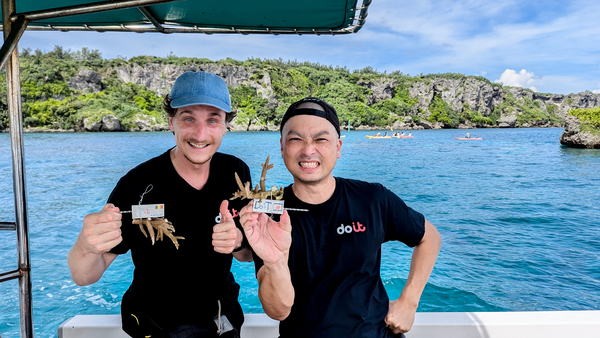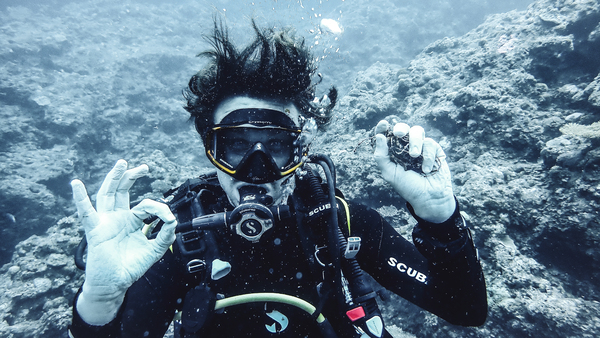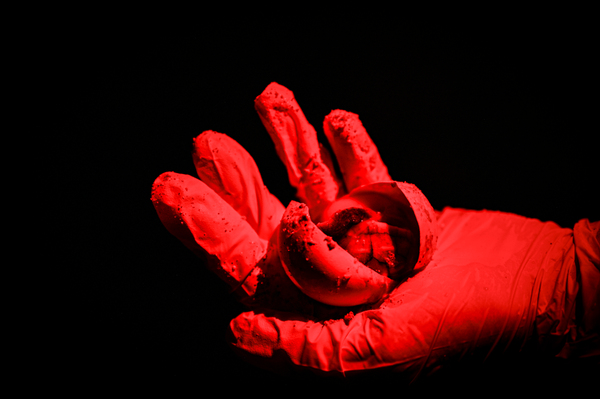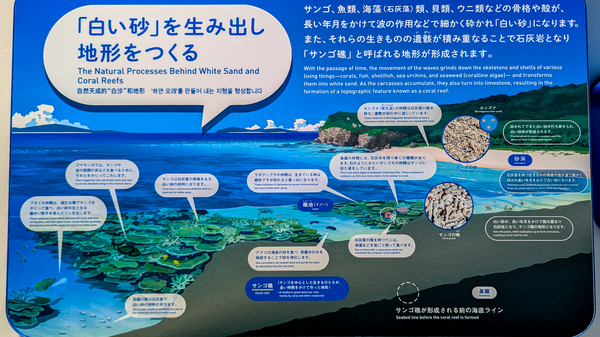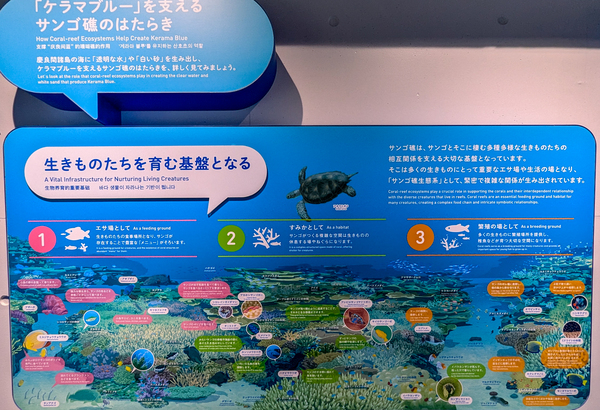In the past weeks, I have spent some time around the beautiful islands in Okinawa, Japan’s 🇯🇵 most southern prefecture. This post shares my experiences in finding and participating in marine conservation efforts across these islands, under the mantra: “take only photos, leave only bubbles” 🫧. But before we dive in, a bit of my personal history and what brought us to this day…
(don't care about the story, just want to know about how you can help out? I GOT YOU COVERED: click here to skip to the next section)
Full table of contents:
The background story
In 2013, my parents and I were traveling to Australia. One of the things Australia 🇦🇺 is known for is the Great Barrier Reef, and I was set on visiting it. But how to visit when something is underwater? Scuba diving was the obvious option, and that’s how I took my first plunge into the underwater world: a few dives off the coast of Port Douglas.
I immediately knew what to do… and got my PADI Open Water license in the summer of 2014 in the murky waters of the Blaarmeersen in my student city Ghent 🇧🇪. Not quite up there with the Great Barrier Reef (yet?), but it did the job as a training ground.
Things didn’t stop there. Diving has brought me to many beautiful places on our little blue planet 🌎: I ended up getting my Advanced Open Water in Belize 🇧🇿 (doing a deep dive into the Great Blue Hole and getting my first sharkfie). While working in London 🇬🇧 I got my Rescue License (yes, in winter, and yes, in a dry suit and no, it wasn’t fun), then my Dive Master in the Seychelles 🇸🇨 and just last year my Open Water Scuba Instructor license in Philippines 🇵🇭.
In 2016, after planning a trip to Indonesia 🇮🇩, which mostly consisted of… you guessed it, scuba diving, I first heard the term “coral bleaching” when diving near Menjangan. The dive centre owner was complaining that they experienced major bleaching and mortality in the reefs - making me rather sad about the impact of climate change on the environment.
During my IDC (Instructor Development Course) with the lovely people over at Instructor Development Philippines we were exposed to more knowledge about marine conservation. We got lectures and training from the Institute for Marine Research who performs research and develops marine conservation strategies within the Philippines.
As part of our IDC, we learned more about their work and initiatives, and in particular the harm crown-of-thorns starfish can do to coral reefs. Crown-of-thorns starfish (COTS) are harmful to coral reefs because they feed on coral polyps, causing widespread coral destruction and reef degradation when present in large numbers. We learned methods to remove and kill these starfish, such as injecting them with vinegar and participated in a cleanup dive to help control their population and protect the coral ecosystem, qualifying us for our PADI AWARE, PADI AWARE Coral Reef Conservation, and Dive Against Debris Instructor Licenses.
BUT, you don’t have to travel far to participate in marine conservation. Since moving to Singapore 🇸🇬 in 2022, I have joined the expansive diving community over there run by Hansen who has expertly and humbly helped me navigate the Singapore waters and led me to find out about Sam’s work with Our Singapore Reefs & Marine Stewards. Other than bringing up a bike (! - it was later exposed in the National Gallery in Singapore) and 301kg of trash in 2022 and 385kg in 2023, we’ve also just become a bunch of friends that dive together.
Marine conservation in Okinawa
So, what led me to write this blog post today? It’s August 2024, about one year after joining DoiT. You might be wondering, why do you talk about your company that helps other companies navigate their challenges in the cloud while you are talking about marine conservation 🤔.
Well, one of the cool perks DoiT offers is something called “Good Do’er Days.” Basically, the company motivates you to volunteer for one day every quarter and contribute to a cause close to your heart.
As you might have understood from what I wrote above, I deeply love scuba diving and care about our environmental footprint. So, when I was planning to go to Okinawa for holidays at the start of the year, I thought: why not combine work & pleasure into one trip that also benefits our planet? 💼🏝️🌏
While planning my trip, I got inspired by this post by the Official Okinawa Travel Guide that discussed the threats to the coral reefs in the region; like the crown-of-thorns starfish outbreaks, increasing temperature of the waters, construction as well as the local initiatives to keep them from further deteriorating.
This prompted me to plan as many marine conservation activities as possible. by reaching out to the local dive centres, Facebook groups, the tourist information agency, and the universities involved in research - which proved to be a bigger challenge than I expected. But the first two activities I found was through the post mentioned above: coral seedling making and coral seedling plantation with Okinawa Diving Service Lagoon!
Coral seedling making with Lagoon Diving
We started our journey with Kazuma-san from Lagoon Diving with a little quiz to see what we already knew about coral - my first learning happened there already: coral polyps are actually related to jellyfish 🪼! The quiz continued into a small lecture on coral reproduction (did you know corals reproduce both through sexual as well as asexual reproduction?), the different species (about half of the known coral species can be found in Okinawa!), the benefits for humans, the ways they can be endangered or destroyed, and finally, what we can do to help. This expanded our knowledge and awareness of why conservation is essential and inspired us for future activities.
After upgrading our knowledge, it was time to get our hands dirty and head to the coral farm which wasn’t far from the dive centre. Upon arrival, we were walked through the steps of creating coral seedlings which is a 5-step process:
- Coral harvesting
- Fixing the coral seedling to the concrete with wire
- Plant the coral in the intermediate growing shelf
- Drill a hole in the rock and plant the coral on the rock
- Follow-up
We got to choose our very own seedling, paint our concrete block and attached the seedling to it with a metal wire. That was the seedling making done!
Coral seedling planting
Obviously, our work wouldn’t be done without also planting the seedlings on the underwater farm. After getting our dive gear ready and wetsuits on, we took the seedlings and headed to the marina for our planting dive. The process was relatively easy: we got to add our newly minted seedlings with the other ones already there. Afterward, we took a 6-month-old seedling and planted it on a rock a bit further. I was amazed at how quickly the seedlings grow, almost like a plant! As you might know, coral reefs are primarily made up of calcium carbonate (the same mineral that makes up limestone) - it’s impressive that it can grow at such speed.
After the planting, we had some time to enjoy the artificial and natural reefs. The colours were absolutely amazing and it’s among the most impressive reefs I have seen during my 100-something dives. When mentioning this to our dive guide, he advised me brown reefs are actually more healthy than the whiter looking ones - another interesting fact I learned. He also imparted the fact that the natural reefs were thriving and doing very well, even independent of the artificial ones, which we were happy to hear. Through this effort, we contributed to the maintenance of biodiversity conservation and making the ecosystem more resilient against modern life adversities.
Dive cleanup
With some time left, we embarked on a second dive for the day. Now, the goal was to do some clean-up. Being an island part of the Ryukya Archipelago, Okinawa has a rich history of fishing and trading, and still today Okinawans are known for their fishing. So on our dive, we naturally encountered a few fishing lines. Even though not as impressive in volume or weight as the dive cleanups I have done in Singapore, the potential negative impact is not to be underestimated: just one line can cause many animals to get tangled (”ghost fishing”), the animals can ingest the plastic, their habitat can be further destroyed amongst things.
Turtle nest excavation 🐢
While planning, I knew that coral seedling creation and plantation would be the highlight of my trip. However, I was determined to do more. After extensive research, outreach, and a bunch of WhatsApp messages, my efforts began to bear fruit. As one of the results, the great Julien from Bubble Addict Okinawa helped me discover Churamura, a local organization focused on sea turtle conservation. I was fortunate to be around the islands when they announced a pop-up nest excavation event.
The turtle nest excavation event was a unique and enlightening experience. We gathered on the Onna Sunset Coast Road, where Churamura's dedicated team guided us through the process. The purpose of nest excavation is twofold: to assess the hatching success rate and to potentially rescue any hatchlings that might have been left behind. As we carefully dug into the sand, the excitement among the volunteers and onlookers alike was palpable - especially the kids enjoyed the hatchlings making their way down the Hatchling Highway, cheering them on and giving them names.
The nest we excavated had the following stats:
- Clutch size: 138
- Hatched eggs: 92
- Hatchlings dead in nest: 1
- Predated eggs: 8
- Undeveloped eggs: 28
- Unhatched eggs with embryo: 6
- Hatchings in the nest: 3 (out of which 2 made it to the ocean while we were there)
Our contribution to the event further supported the work done by Churamura in conserving turtles.
Beach clean-ups 🏖️
All of these happened because of the preparation work I put in before heading to Okinawa. Little did I know there would be some serendipitous marine conservation as well! When I arrived in Zamami Island, the first thing I did was head to the fantastic visitor centre near the port. Apart from speedy WiFi, funky sodas and information about how the water gets its “Kerama Blue” colour, they also make it possible for visitors to participate in organised or impromptu beach cleanups. For as little as ¥500, you get a bag, instructions and gloves and you can go off and clean a beach, which I did. As I cleaned the beach and on the way home, I noticed approving looks and grateful nods from the locals passing by. It was a heartening reminder that even small actions can make a difference and potentially inspire others to join in conservation efforts.
While there, I learned some rather curious facts about these pristine white beaches. Turns out, we're basically lounging on a natural graveyard x fish toilet! 💀💩 A good chunk of the sand is actually parrotfish poo. These colorful fish munch on coral algae, inadvertently ingesting bits of coral and then excrete fine sand particles (some large parrotfish produce up to 100 kg of sand per year - an estimated 70% of the sand on your favourite white sandy beach in Caribbean and Hawaii is probably made up of poo!).

But wait, there's more - the rest of the sand? It's largely made up of tiny fragments of coral skeletons and shells from dead mollusks, ground to sand by “bioerosian”. So next time you're making your picture perfect Instagram post, remember you're on a bed of fish feces and coral corpses 😂. It's a perfect (if slightly morbid) example of nature's intricate cycles and why preserving marine ecosystems is so crucial.
This brings me to the more classic form of marine conservation - beach clean-ups! I got lucky enough to learn about the Yomitan Beach Cleanup Network from a few nice people on the Okinawa Divers Facebook group.
So next to visiting the local tourist information or city council (which looks like the best places to go when already on location), you should definitely try Facebook pages and groups (and ask around on those)!
And what’s the impact of a simple beach clean-up? Similar to a dive clean-up, you avoid animals ingesting or getting tangled in trash, you avoid further polluting the ocean, and keeping the coastal habitats and ecosystem healthy.
Okinawa Institute of Science and Technology (OIST) visit 🔬
Lastly, we visited OIST, a world-class research university and well-known in the marine conservation science space. I say ‘we’, because one of my colleagues is Okinawan and I had the pleasure to meet and #have-fun with him. Through his connections, we managed to get a full tour of the campus, learning about the school, the different research areas, and we even had the chance to meet with one of its neuroscience professors - overall a very awesome and enlightening visit.
OIST's state-of-the-art Marine Science Station, opened in 2016, provides researchers with direct access to a molecular biology laboratory, and systems for rearing marine organisms like coral and tropical fish which has contributed to their research about e.g. crown-of-thorns population evolution.
This visit to OIST provided valuable context to the conservation activities I had participated in throughout Okinawa. It highlighted the critical role of scientific research in underpinning effective conservation strategies and reminded me that the efforts of individual volunteers, like myself, are part of a larger, scientifically-guided mission to protect our oceans. And just an oh-so-beautiful campus.
Wanna get your hands dirty?! 🌊🧼
It’s the perfect timing! PADI is organising the PADI AWARE WEEK running from 14 to 22 September 2024 (and probably around the same time if you are reading this far in the future). Find a local dive organisation that is involved in marine conservation and ask them about their activities like we did this weekend in Singapore:
If you are based out of Singapore, consider joining the Blue Water EduFest running from 7 to 9 November 2024 and signing up for the ONE°15 Clean Up (you’ll find me there!) 🇸🇬🤿. Or keep an eye out on the Submersibles webpage since they organise clean-ups from time to time.








